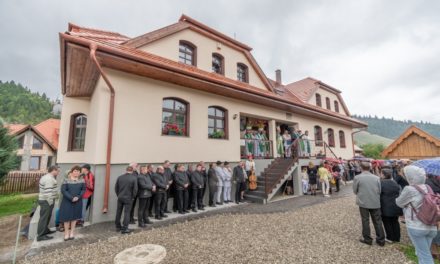The Áron Márton Museum in Csíkszentdomokos was established on the thirtieth anniversary of the bishop's death. The exhibition presents the life of the bishop from his native village until his death, giving an idea of the historical events that influenced the life and culture of the Hungarians in Transylvania.
Csilla Lázár, the director of the museum, drew attention to the fact that Bishop Áron Márton is an "eternal hero of Transylvanian Hungarians". That is why it was considered important to create a memorial where visitors can get to know the bishop's life, spirit, and work more closely, and draw their own conclusions: how it is worth living even in very difficult historical circumstances.
The museum, which was established 13 years ago on a voluntary basis, is still operated by volunteers. Csilla Lázár also does this work in her spare time. He also mentioned that the exhibition is not only important for the community, but also gives a lot to the volunteers, both by example and legacy.
Bishop Áron Márton's written legacy is extremely rich, and there is almost no area of life in which we would not find encouraging or encouraging words from him. He made no provision for posterity, but if he had, we believe that he would have left it to us to strengthen the community and continue the education.
The Márton Áron Pilgrim Center was created in part to realize this, which is suitable for receiving visitors, but also provides space for local community programs, explained the museum director.
The exhibition begins with a section commemorating the native village, where you can see a model of the bishop's former birthplace, and at the same time, you can see pictures of life that show the everyday life of people in Csíkszentdomokos in the 20th century, at the time when Áron Márton lived the daily life of a farmer as a child.
In the first room, they also commemorate the First World War, since Áron Márton enlisted as a soldier at the age of 18, and the war experience determined for a lifetime how much he can appreciate peace and harmony. In addition, the exhibition section commemorating the episcopal consecration was also located there, and then the Second World War closes the exhibition material of the first room.
"Regarding Áron Márton, it is also important to talk about the second decision in Vienna, which divided Transylvania in two, and as a result of which Northern Transylvania returned to Hungary, but Gyulafehérvár and the episcopal seat remained in Southern Transylvania, and Áron Márton also remained there, trying to keep the spirit of the Stuck in Hungarians in Southern Transylvania," explained the museum director.
Storage cabinets have been placed in the second room of the museum, in which visitors can get to know one story at a time. You can see, for example, the candle that burned at the bishop's funeral in Gyulafehérvár in 1980, or the bishop's Swiss watch, which he undoubtedly received as a gift, while a separate small room presents the ten-year house arrest and secret service surveillance of Bishop Áron Márton.
They illustrate a document that came to the museum from the archives of the Securitate thanks to the historian Denisa Bodeanu, and which shows how many levels the bishop was observed.
The most valuable piece of the museum is the bishop's coffin lid, which was brought to the museum as part of the beatification process in 2016, when the coffin was moved from the crypt of the cathedral to its side nave, a stone sarcophagus, and the intact coffin lid was transported to Csíkszentdomokos.
"We experienced this as a great honor, and it is also an extremely touching piece for the visitors, not only because it is indeed an object referring to the bishop, but also because of its decoration. It was made by a master from Giergyóremet and placed very beautiful symbols on it, the Alpha and Omega carved from the visible root, as well as a cross, which, if you like, is a sword, if you like, a root, or if you like, a stole," detailed Csilla Lázár.
The last room of the exhibition is the basement, where the prison years and political trial of Bishop Áron Márton are presented, as well as memorials to those convicted in the same trial as him.
As the museum director told, Áron Márton was arrested in 1949, the diocese's management did not know anything about him for a long time, and many times they even spread the news of his death. We now know from the documents that he was sentenced to life imprisonment on charges of treason, but was finally released after six years in prison. However, he could not be released for long, as he was soon ordered to be under house arrest, which was extended several times, so in the end, after almost six years in prison, the bishop had another ten years of house arrest in Gyulafehérvár.












